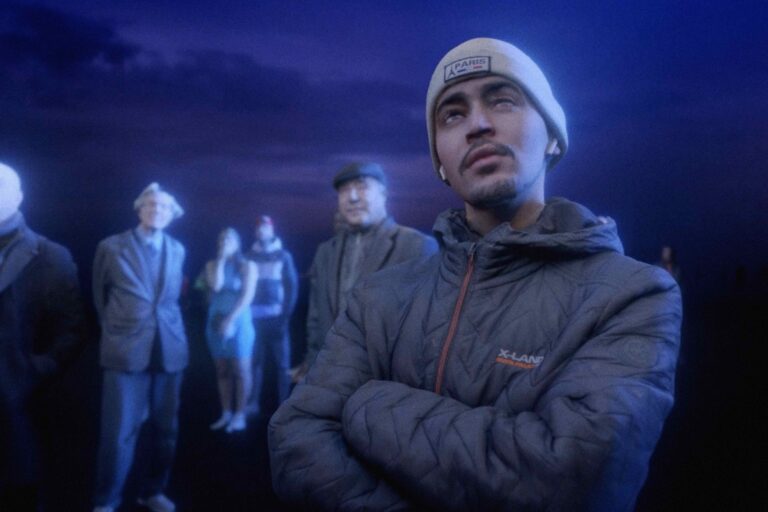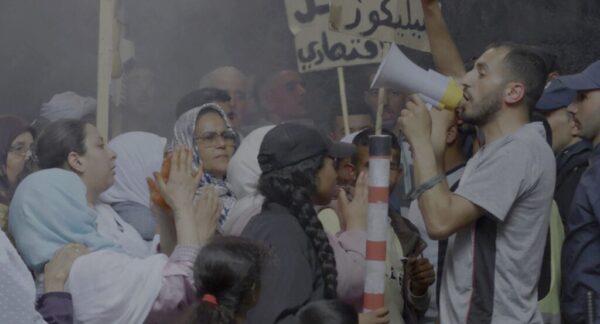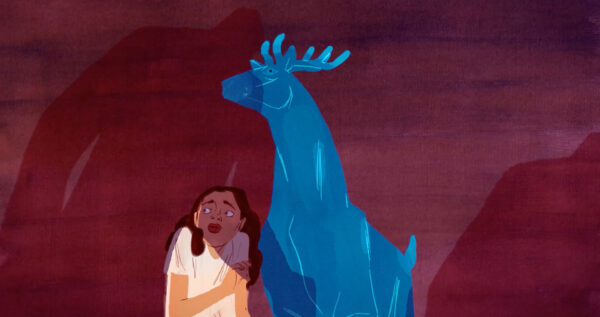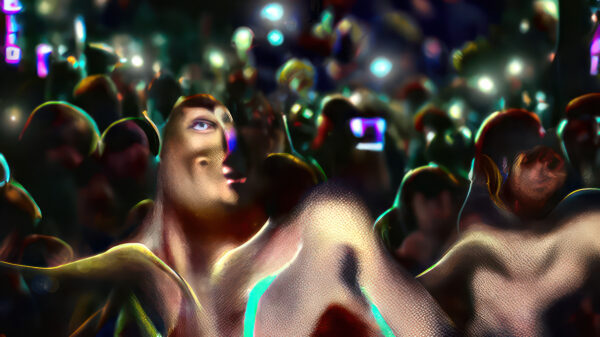Republic on Fire
Ardent Other
Alice Brygo mixes documentary footage with computer-generated imagery to produce an intriguing, genre-defying admixture of realism and the surreal.

For some time now, the once great nation of France has been in terminal decline. The proof is everywhere, from national crises like the fire at Notre-Dame to bedbug hysteria and the dog-whistle bluster of France’s mushrooming populists. Naturally, young people and immigrants are to blame.
Writer-director Alice Brygo’s Ardent Other vigorously grabs hold of this major if a little timeworn theme of French culture. But the film treats it with the kind of sidewise glance one might expect from a visual artist and filmmaker educated at EnsAD Paris and Le Fresnoy, and whose new short more readily evokes a gallery piece than narrative cinema. In fact, Brygo cunningly redeploys the rhetoric of decline and fall to reflect on the spectacle of catastrophe, pondering the panic and discord that can thrive in its wake. All while mixing documentary footage with computer-generated imagery to produce an intriguing, genre-defying admixture of realism and the surreal.
The short opens with lingering slow-motion close-ups of faces in a Paris crowd, documentary footage drawn from what seems an authentic gathering in the French capital. A protest, a rally? Or something more sinister? These Parisians appear by turns bemused, angry, irritated, and afraid. But always transfixed, always focused on an event that, for us, remains tantalisingly out of frame.
Suddenly, the scene shifts. Set against a dark background and a menacing black sky, our Parisians are transformed. Reconstituted by photogrammetry, the same onlookers stand a good distance from one another, newly isolated but still spellbound. Many now have a blank, otherworldly stare. Their faces are bright as though lit by off-screen flames. We hear the crackling of a nearby blaze. As the spectators stand static, frozen in naturalistic poses as if petrified on a film set, a roving camera navigates Steadicam-style between them, drawing close to one figure before moving on to the next.
The bulk of Ardent Other follows this same basic pattern. But despite the spectre of crisis and the pervasive atmosphere of surreal horror, this is no disaster film. Deliberately eschewing both generic and narrative conventions, Brygo drifts from tableau to tableau, brooding on the crowd and that unseen catastrophe. Notre-Dame on fire? Those flickering flames and the whispered, piecemeal dialogue would suggest as much: each time we approach a mesmerised spectator, we hear what we take to be their internal monologue. Some speak of a burning cathedral. They lament the passing of an era, the final fall of France. Others hope that from the ashes will rise a brighter future. (Another speaks of seafood: many of these fleeting monologues offer mumbled, muddled phrases about everyday concerns.)
This is the film’s most successful gambit. Through intelligent sound design—the foley and dialogue are expertly managed—and that creative use of photogrammetry, we are witness to the emotions that unite this diverse Parisian crowd as well as the private thoughts, unspoken fears, and secret pleasures that keep each of them a prisoner in their own universe, divided and afraid. In its strongest moments, Ardent Other dissolves the very divisions that the film itself dramatises, collapsing the distance between these supposedly solitary spectators and offering something like a higher vantage point from which to contemplate the fractured state of France.
Unfortunately, though, if Ardent Other happily resists generic classification and rejects narrative orthodoxy, it does at times drift into repetitiveness, if not vagueness. As we cycle ceaselessly from spectator to spectator, that high vantage turns from strength to weakness, leading to a diffuse, impersonal feeling. Even so, a few well-placed cuts and the inherent gravity of the subject help build an eerie form of dramatic tension.
In a stronger second half, Brygo’s computer-modelled figures start disintegrating. Their clothes shot through with holes, their waxy faces as if melting. As though giving way to the flames that hold them enthralled or devoured from within by Saint Anthony’s fire, le mal des ardents (the short’s original French title). The effect is uncanny yet far from body horror, though. Instead, it’s a heightening of the surreal in service of reality, showing that these spectators are all suffering from the same sickness, the same poison. No surprise, then, that a poster of far-right French polemicist Éric Zemmour makes a conspicuous appearance.
In a way, then, Ardent Others initial conceit only gains in force as the film goes on. By cleverly keeping the catastrophe just out of sight, Brygo’s off-screen crisis takes on a ballooning significance. This lends a state-of-the-nation feel to what might otherwise have remained a clever technical exercise. And it means that, while the film dwells on the complex interrelations between spectacle and social discord in France—how catastrophe can make latent conflicts coalesce—it also shows that these explosive events can be charged with the whispered promise of a future community.
And yet, by the end of its somewhat laboured runtime, Ardent Other undermines its own most potent tactic. In a climactic tableau, a young crowd member stands boldly posed on a platform, staring down at their jeering elders in a posture that readily recalls revolutionary iconography: a straightforward generational clash. In other words, at key moments, Ardent Other ingenuously stages the very conflicts it elsewhere seeks to expose and subvert. The old divisions are reaffirmed, the familiar battle lines redrawn. And the siren song of decline and fall keeps our burning feet dancing another day.




There are no comments yet, be the first!